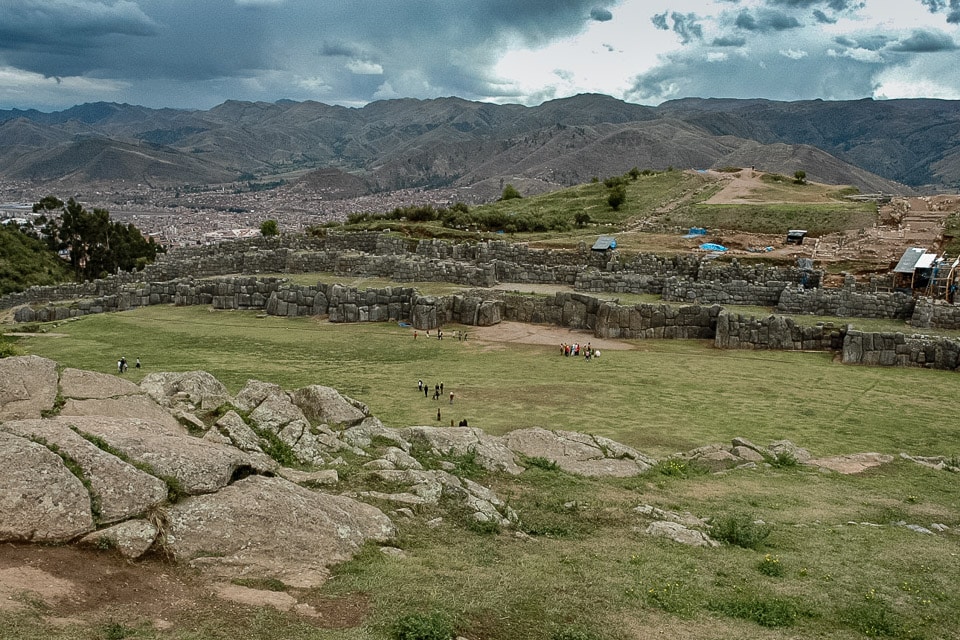
Before visiting the Sacred Valley of Peru, I highly recommend a book called The Last Days of the Incas by Kim McQuarrie. It makes traveling so much better when you know something about the history of what you're looking at. It's a terrific lot of historical research that reconstructs in great detail just how the Spanish destroyed the Inca empire, including the fortress of Sacsayhuaman, north of the city of Cusco. The story of Sacsayhuaman fits in beautifully as a footnote to Hiram Bingham's accounts of his rediscovery of the Inca archaeological sites of the Sacred Valley, particularly Machu Picchu.
The basic story of the Inca-Spanish conflict is one that started out with trickery and treachery. Ostensibly, the Spanish, led by Francisco Pizarro, came in peace. Pizarro's Spaniards lured the Inca emperor Atahualpa into a city they had occupied, then overpowered his guard and captured him. Most Americans have heard that Atahualpa, still not understanding the depth of Spanish greed and depravity, offered to fill a large room with gold and silver if the Spanish would agree to leave and free him. And, making a long story short, the Incas paid the ransom, denuding their kingdom of its decoration in the process (the Incas didn't use gold for money, only as ornament of the nobility and of their temples to their sun god) and then the Spanish killed Atahualpa anyway and (eventually) appointed one of this brothers, Manco Inca, the puppet emperor.
Manco Inca went along with the Spanish for a while (he still hoped they'd leave when they had enough gold) but after one of the Pizarro brothers forcibly took his wife and threw him in chains, Manco Inca escaped (by promising to go get some more gold and bring it back to the Pizarros) and reconstituted the Inca army and tried to throw the Spaniards out of Peru.
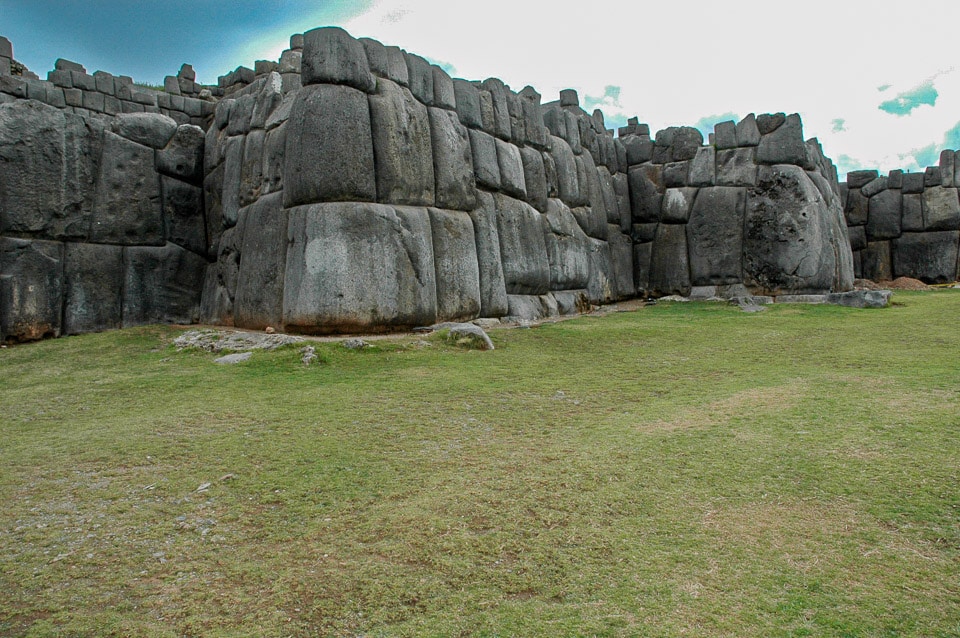
After knocking off most of the Spanish who had moved out into the countryside to better subjugate the Indians there, and killing most of the Spanish troops who'd been sent out of Cusco to subdue the rebellion, Manco Inca occupied the Inca fortress at Sacsayhuaman on the mountain above Cusco and laid siege to the Spaniards in the city at the bottom of the hill.
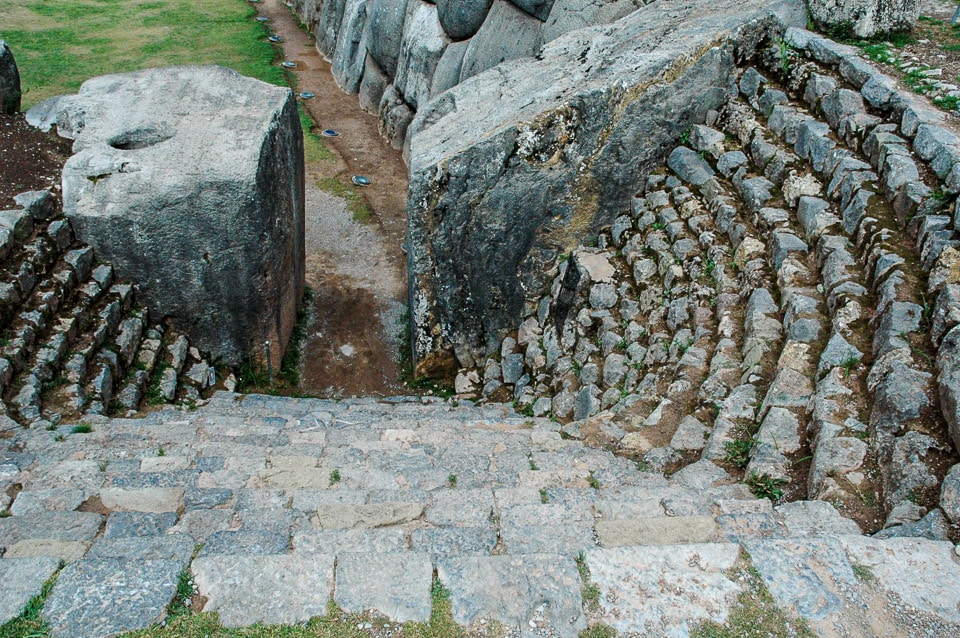
But after the Incas assaulted the city with thousands of troops, and pretty much burned it down, very few Spaniards were killed or dislodged. In fact, fifty Spaniards, led by Juan Pizarro, along with a few hundred Indian supporters, counterattacked up the hill to Sacsayhuaman, and defeated the Incas there. The Incas retreated to Ollantaytambo, but the Spanish occupied Sacsayhuaman, and eventually destroyed most of the fine stone buildings there and used the stone to build their own estates in Cusco and surrounding areas. At today's archeological site, only only the base of the walls and the foundations of the towers that originally graced the city remain.
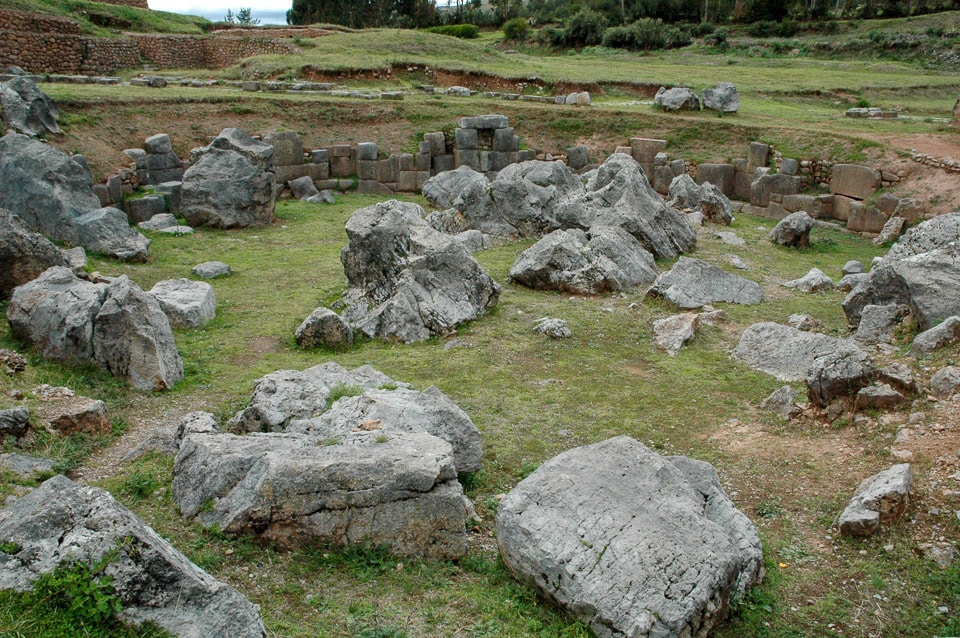
The Incas usually built temple walls around natural rocks that jut from the ground. Some rocks were used as altars. Others as symbols of the Inca connection to the mountains.
What is left now is the ruins of the three towers of the citadel at the top of the mountain, and most of the three tiered walls that the Spanish breached to get to the citadel. Also on the other side of the plain in front of the fortress walls is the temple area with the usual Inca mix of fine stonework merged beautifully with natural stones jutting from the earth. (The natural stones represent the Inca religious connection with the mountains.)
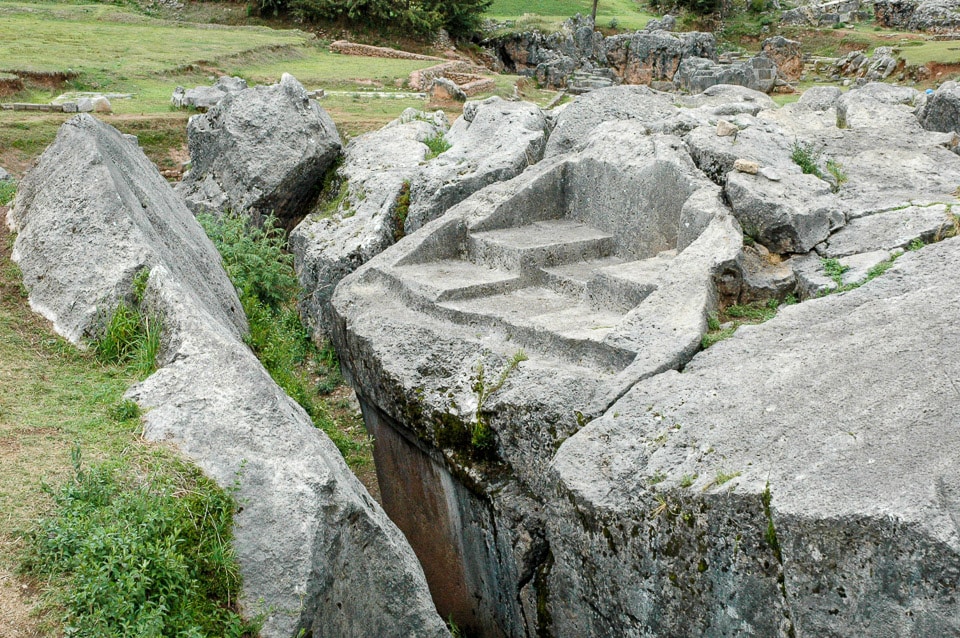
Sacsayhuaman is best visited while you are staying in Cusco. (There are also lots of other Inca sites in and around Cusco that you can see on a city tour.) If you are fit and acclimated to the altitude you can walk up the old Inca road to the site. If you aren't up for the climb, you can take a taxi and walk back down. If you don't want the walk, you can take a taxi back down, too. There are always one or two waiting in the site's parking lot.
To visit Sacsayhuaman and the other sites, you'll need a boleto turistico (a tourist ticket) which costs 130 soles (about $35) and is also good for all the sites around Cusco and in the Sacred Valley. It's well worth it. If you show up without this ticket, you can buy one on the spot, but it will be a lot more expensive. (You have to buy the boleto turistico in Cusco. Ask at your hotel where to get it.)
To thoroughly visit the site, you'll need at least two hours. If you haven't done any reading beforehand, you might want to hire one of the tourist guides who hang out at the entrance. In general, they seem to really know their history and Inca lore, and the few dollars it will cost you is well worth it. (We've done the Inca sites both with and without guides. Our guides so far have been very good. The detail they know adds a lot to your appreciation of what you're looking at. Also, if the guide has bothered to learn English, that probably means he's a pro, and he's also made the effort to learn his subject.)
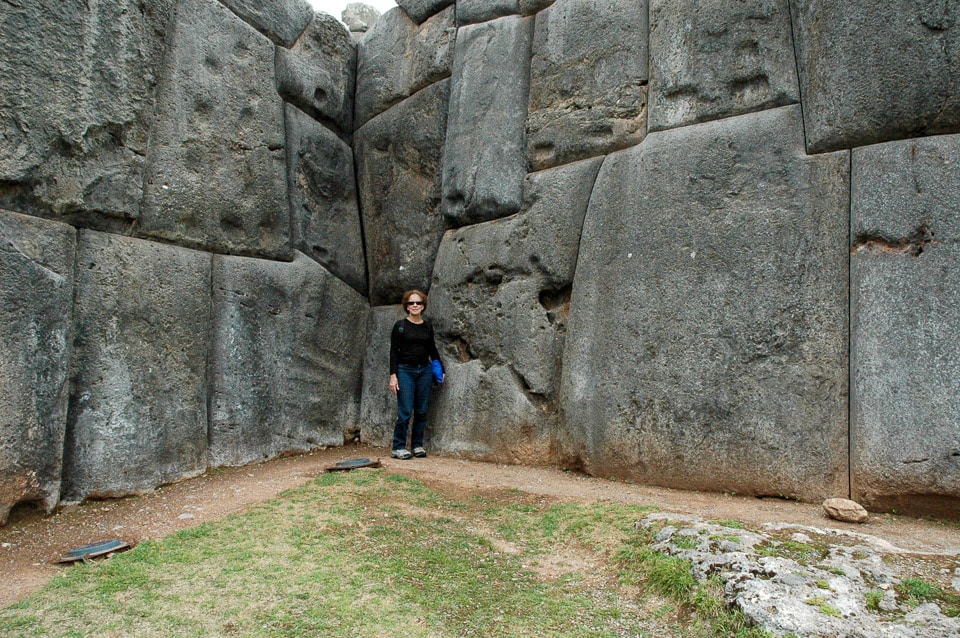
So, marvel at the size of the stones of the defensive walls, and realize why the Spanish didn't bother to destroy them, too. And wonder at the skill of the civilization that could create such works of religion and civil engineering…and also wonder what was lost when the Spanish systematically destroyed them.
You can read more about the Sacred Valley of the Inca here.
Find a tour of Cusco and Sacsayhuaman here
You can find hotels in Cusco at Booking.com.
Frequently asked questions (FAQ) about visiting Sacsayhuaman in Peru
Q: Where is Sacsayhuaman located?
A: Sacsayhuaman is located just outside the city of Cusco in Peru. It is situated on a hill overlooking the city.
Q: What is Sacsayhuaman?
A: Sacsayhuaman is an impressive Inca archaeological site known for its massive stone walls and impressive architecture. It is believed to have served both military and ceremonial purposes during the Inca civilization.
Q: How do I get to Sacsayhuaman?
A: Sacsayhuaman is located about 2 kilometers (1.2 miles) north of the city center of Cusco. It's easily accessible by taxi, bus, or even on foot if you don't mind a short uphill walk.
Q: Is there an entrance fee to visit Sacsayhuaman?
A: Yes, there is an entrance fee to visit Sacsayhuaman. As of September 2021, the fee for adults was 70 Peruvian Soles (approximately $20 USD). However, please note that fees and currency exchange rates may change, so it's advisable to check the current rates before your visit.
Q: What are the opening hours of Sacsayhuaman?
A: Sacsayhuaman is generally open to visitors from early morning until late afternoon. The exact opening and closing times may vary, so it's recommended to check the official website or inquire locally for the most up-to-date information.
Q: Can I explore Sacsayhuaman on my own?
A: Yes, you can explore Sacsayhuaman on your own. The site is relatively easy to navigate, and there are information boards at various points providing details about the structures. However, hiring a local guide is highly recommended to gain a deeper understanding of the history and significance of the site.
Q: What should I wear and bring when visiting Sacsayhuaman?
A: It's advisable to wear comfortable walking shoes and dress in layers as the weather in Cusco can change throughout the day. It's also recommended to bring sunscreen, a hat, sunglasses, and a water bottle to stay hydrated.
Q: Are there any restrictions or rules for visiting Sacsayhuaman?
A: Yes, there are certain rules and restrictions to ensure the preservation of the site. Climbing on the walls or touching the stones is not allowed. Also, drones are generally not permitted. Additionally, it's important to respect the site's cultural and historical significance and follow any instructions given by the authorities.
Q: Are there restroom facilities at Sacsayhuaman?
A: Yes, there are restroom facilities available near the entrance of Sacsayhuaman. However, it's always a good idea to use the restroom facilities in Cusco before heading to the site.
Q: Can I combine a visit to Sacsayhuaman with other nearby attractions?
A: Sacsayhuaman is often visited in combination with other nearby attractions such as Qenqo, Tambomachay, and Puca Pucara. Many tours and guides offer combined visits to these sites, providing a comprehensive experience of the region's ancient history.
Please note that it's always recommended to verify the latest information, including ticket prices, opening hours, and rules, before your visit to Sacsayhuaman, as things may always change.
Up Your Travel Skills
Looking to book your next trip? Use these resources that are tried and tested by us. First, to get our best travel tips, sign up for our email newsletter. Then, be sure to start your reading with our Resources Page where we highlight all the great travel companies and products that we trust. Travel Accessories: Check out our list of all the accessories we carry to make getting there and being there a lot easier. Credit Cards: See our detailed post on how to choose the right travel rewards credit card for you. Flights: Start finding the very best flight deals by subscribing to Thrifty Traveler. Book your Hotel: Find the best prices on hotels with Booking.com. See all of the gear and books we like in one place on our Amazon shop.Got a comment on this post? Join the conversation on Facebook, Instagram, or Threads and share your thoughts!

